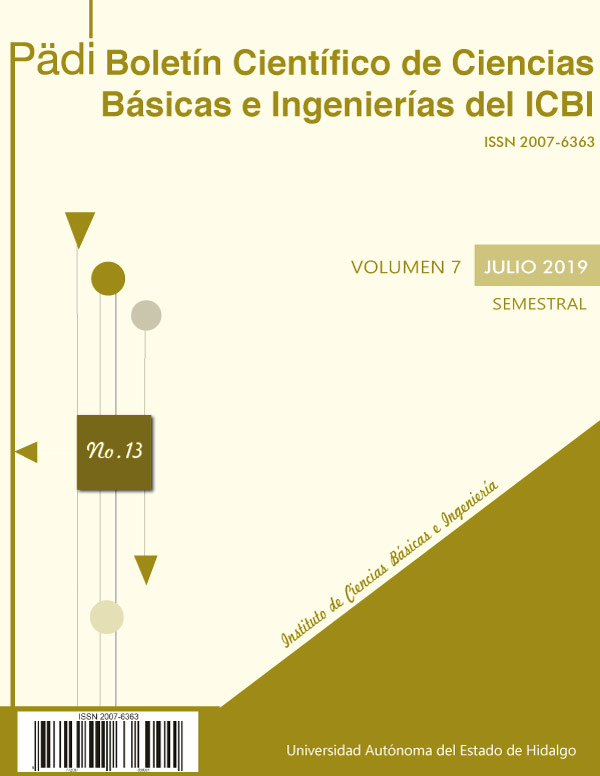Development and application of a methodology for the elaboration of landslide municipal hazards maps using Geographic Information Systems
DOI:
https://doi.org/10.29057/icbi.v7i13.3439Keywords:
Landslide Municipal Risk Maps, Landslide Municipal Hazard Maps, Geographic Information Systems, Angangueo, Michoacán, Landslides, Slope InstabilityAbstract
A methodology is proposed and applied to identify areas prone to landslides through the use of Geographic Information Systems (GIS). CENAPRED proposes a methodology that has to be applied slope by slope, which consists of assigning a score that reflects the susceptibility of each of the relevant factors for landslide processes, such as slope, land use, type of rock, etc. The main disadvantage of this methodology is that it results in a discrete analysis (a score per slope), when we currently have GIS that can be used to assign scores in complete regions that naturally result in hazard index maps. In addition, GIS allows this work to be carried out expeditiously, efficiently, and without the need for field visits. In the present article we explore the application of the methodology proposed by CENAPRED but using SIG. Since there are some factors that cannot be calculated in GIS, such as the height of a slope (not to be confused with altimetry), the factors used here differ from the factors proposed by CENAPRED. The factors used here are the following: slope, type of rock, type of soil, faults, land use, and previous occurrence of landslides. All of them were obtained from official public information sources. The methodology was applied in Angangueo, Michoacán, and allowed creating a hazard map for the entire area of interest. This map adequately captures the areas where landslides have occurred most frequently. These zones correspond to the urban area, where the topography is also very rugged. And, on the other hand, it is also possible to correctly identify areas with lower risk, which are associated with cultivated lands with gentle slopes, where no landslides have occurred. Therefore, it is considered that the proposed methodology enhance the methodology proposed by CENAPRED to allow the elaboration of continuous hazard maps. Perhaps the greatest challenge for its application at municipal level is the availability of high resolution cartography. In addition, land use cartography also offers a great challenge due to its great dynamism, associated with deforestation and urbanization. Therefore, it is considered important that the institutions in charge of official national cartography update the information as frequently as possible.
Downloads
Publication Facts
Reviewer profiles N/A
Author statements
Indexed in
- Academic society
- N/A
References
CENAPRED, 2004, Guía básica para la elaboración de atlas estatales y municipales de peligro y riesgo, México, DF, 389pp.
Hernández, J. C., 2014, A un 50% la reconstrucción de Angangueo a 4 años de la tragedia. Recuperado el 17 de 10 de 2018, de QUADRATIN: https://www.quadratin.com.mx/principal/A-un-50-la-reconstruccion-de-Angangueo-4-anos-de-la-tragedia/
INEGI, 2009, Prontuario de información geográfica municipal de los Estados Unidos Mexicanos. Recuperado el 29 de 10 de 2018, de http://www3.inegi.org.mx/contenidos/app/mexicocifras/datos_geograficos/16/16005.pdf
INEGI, 2015, Conjunto de datos vectoriales de información topográfica escala 1:50 000 serie III. E14A26 (Angangueo). Recuperado el 29 de 10 de 2018, de http://www.beta.inegi.org.mx/app/biblioteca/ficha.html?upc=702825268657
INEGI, 2017, Continuo de Elevaciones Mexicano 3.0 (CEM 3.0), Recuperado de: http://www.inegi.org.mx/geo/contenidos/datosrelieve/continental/continuoelevaciones.aspx.
IPCC, 2014, Climate Change 2014: Synthesis Report, Geneva, Switzerland, 151pp.
Servicio Geológico Mexicano, 1998. Carta Geólogico Minero Angangueo E14-26. Recuperado el 28 de 10 de 2018, de https://mapserver.sgm.gob.mx/Cartas_Online/geologia/1566_E14A26_GM.pdf
Servicio Geológico Mexicano, 1998. Carta Geólogico Minera, Morelia E14-1. Recuperado el 28 de 10 de 2018, dehttps://mapserver.sgm.gob.mx/Cartas_Online/geologia/78_E14-1_GM.pdf
Uribe Alcántara, E.M., Montes León, M.A.L.; García Celis, E., 2010, Mapa Nacional de Índice de Inundación. Tecnología y Ciencias del Agua, v. 1, n. 2, p. 73-85. ISSN 2007-2422.




















